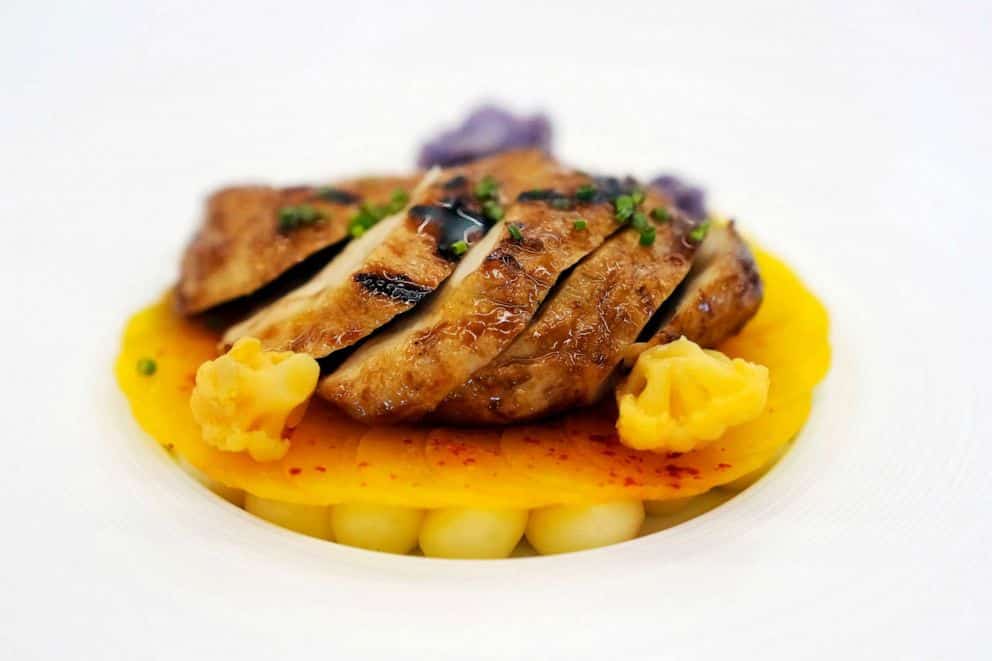
Imagine sinking your teeth into a succulent, juicy chicken breast without the need for harmful traditional farming or animal slaughter. This is now a reality as Upside Foods and Good Meat, two pioneering companies, celebrate their historic achievement—the first-ever approval from the U.S. Department of Agriculture to sell lab-grown meat.
With this significant development, the United States joins Singapore as the second nation to embrace this cutting-edge innovation. The advent of cultivated meat ushers in a new era of food production, challenging conventional norms and offering a tantalizing glimpse into the future of sustenance.
Lab-grown meat: soon in a restaurant near you
Derived from a mere sample of livestock cells, cultured meat is grown in steel vats, nurtured, and nourished until it is ready to be packed and served to hungry customers. It’s an entirely new way of developing meat products, part of a grander field known as cellular agriculture, which does not harm animals and is much less carbon-intensive.
Traditional livestock production is responsible for a staggering 14.5% of the world’s greenhouse gas emissions, as reported by the U.N. Food and Agriculture Organization (FAO). In a world grappling with climate change, lab-grown meat presents a potentially viable solution—an environmentally friendly and humane alternative that promises to satisfy the cravings of avid meat lovers while leaving a smaller ecological footprint.
According to a 2011 study from the University of Oxford, so-called cultured meat could generate up to 96% lower greenhouse gas emissions than conventionally produced meat. However, other scientists seem to disagree strongly.
In a preprint study, which is yet to be peer-reviewed, researchers at the University of California, Davis argue that the global warming potential of cultured meat is four to 25 times greater than the average for retail beef. That’s because current lab-grown meat uses highly refined, pharmaceutical-grade growth media required for the animal cells to multiply.
We’ll have to wait for more studies to gain a better picture of the global warming potential of cultured meat. This historic approval of lab-grown meat will probably accelerate and motivate new research in this area to clear things up.
However, nothing about any of this was easy. Both Upside Foods and Good Meat underwent a rigorous and multi-step approval process before receiving the coveted USDA seal of approval. Previously, the U.S. Food and Drug Administration had already deemed this lab-grown meat safe for consumption.
“It is a dream come true. It marks a new era,” Uma Valeti, CEO of Upside Foods, told Reuters.

Initially, lab-grown meat is expected to grace the tables of high-end restaurants. Upscale establishments, such as Bar Crenn, the renowned restaurant owned by visionary chef Dominique Crenn in San Francisco, will be among the first to serve Upside chicken. Good Meat, on the other hand, will be first available at the prestigious José Andrés Group. Good Meat also makes cultured chicken.
While high-end dining experiences will initiate the introduction of lab-grown meat, Upside Foods and Good Meat have their sights set on a larger goal—bringing this innovative product to the masses. By scaling up production and streamlining processes, they aim to reduce costs, making lab-grown meat an affordable option available in grocery stores nationwide.
If you’re following these developments with intrigue and culinary curiosity, rest assured — the day will come when you too will be able to enjoy lab-grown meat. It will probably cost a pretty penny though during these early days when the economy of scale hasn’t been charged up yet.
Two-thirds of Americans (67%) say they would eat cultured meat grown in a lab setting, according to a survey conducted OnePoll on behalf of Farm Forward, a nonprofit whose mission is to end factory farming.
Expecting surging demand, Upside Foods will soon reveal the location of a colossal new production facility, which is supposed to be 10 to 20 times larger than its existing plant.






